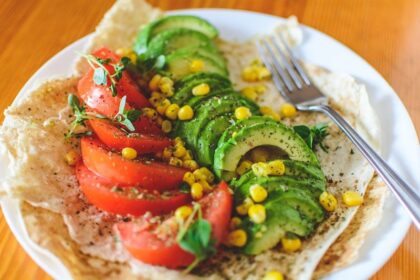The body is sliced down the middle, opened like a thick book, on top of sizzling coals. Tiny hands, still with finger nails, reach into the air as if their last plea for help had gone completely unnoticed. Bright white teeth gleem out of mouths open in a scream and faces twist in agony. Apparently, the miniature murder scene I am witnessing is about to be my dinner.
I have been searching various cities throughout Ecuador to find some good guinea pig, or cuy, to sample. While it isn’t hard to find, many restaurants sell it for expensive prices, sometimes more than $20 for one. I learn through my search the best city in Ecuador to get delicious cuy for an affordable price is the adventure-town of Banos. Near the market, or El Mercado, I have discovered a couple eateries selling the delicacy for $3.50 per half portion with rice and potatoes. I don’t even need to look hard, as local women grill the animal right on the sidewalk.
Despite having been excited to try the popular Ecuadorian meal, something inside me feels a bit uneasy. My mind wanders back to my first pet, a guinea pig I named Joey after a school crush. Everyday I would shower him with love, peting him, feeding him and taking him into this giant playpen my parents had set up. Although Joey had passed away when I was 12, it still felt wrong to be eating his extended family.
I refuse to let my mental discomfort stop me from ordering my meal. Why? Well, for a few reasons. One, I know eating cuy is a big part of the culture in Ecuador. In many restaurants, you’ll see happy guinea pigs frolicking around munching on yellow carrot, not realizing by eating the vegetable they are making themselves more tasty. Guinea pigs are abundant and easy to raise, making them a vital staple for the country’s people. Moreover, I know I will be a hypocrite for eating burgers and chicken for lunch, but refusing to eat guinea pig because of how cute it was.
The chef chops off a piece of the mid-section and plops it on a plate. As I make my way into the tiny, dimly lit restaurant, I notice many locals eating the same meal. The table has a small bowl of spicy aji, and I spooned a bit onto my food, ignoring the fact the hands and nails of the animal are still attached. The chatter of the other diners seems to go quiet as I take a knife and cut a chunk of meat. Will I be able to keep it down? I close my eyes and hold the fork near my mouth. One, two, three…
My eyes shoot open. “Holy crap, this is delicious!”
The chef sees my reaction and bursts into laughter. I’m probably not the first American to trycuyand be surprised by the flavor. It tastes like a mixture of chicken and sausage; a juicy, fatty white meat I had yet to discover. I begin shoveling the meal into my mouth, ordering a second serving once I am done.
“Now, I just need to figure out how to legally cook this at home,” I say to myself, realizing once again how easy it is to discover new joys when you open yourself up to the unknown.
Jessica Festa
Latest posts by Jessica Festa (see all)
- A Culturally-Immersive Adventure In Mongolia’s Altai Mountains - Jul 8, 2023
- This Recipe Sharing Platform Supports Women In The Culinary Industry (Labneh Recipe Included!) - Nov 5, 2020
- Hiking The Mohare Danda Community Eco-Trek In Nepal - Jun 3, 2020
- 6 Important Questions For Choosing A Responsible Yoga Retreat - May 18, 2020
- How To Create & Grow A Profitable Blogging Business (Ethically) - Jan 18, 2020




